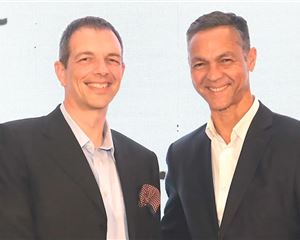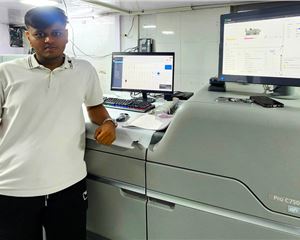Product line integration is the key to efficient quality control
David Arnaud of Bobst talksto Rahul Kumar about the qualilty control systems and sustainable profits
03 Jan 2023 | By Rahul Kumar
Rahul Kumar (RK): This is what we see as per different studies regarding the transit packaging in eCommerce and actually, we saw a direct link between the eCommerce growth in the last years during the sanitary crisis and the increase of corrugation box (CB) demand. It tends to show this link between eCommerce and CB use.
David Arnaud (DA): This is what we see on different studies regarding the transit packaging in ecommerce and actually, we saw a direct link between the eCommerce growth in the last years during the sanitary crisis and the increase of CB demand. It tends to show this link between eCommerce and CB use.
RK: Corrugation, being a volumetric market, how can Bobst help corrugators, especially in terms of fast conversion and more conversion? To make them competitive?
DA: The gain in efficiency is the key to addressing this topic, and the concept of full line solution is the key in that regard: from the pile of boards to a pile of packaging.
For example, Bobst proposes the fastest setup time on the FFG 8.20 Expertline with the sequential order change that allows setup time of less than two minutes. This is not only theoretical, but converters can achieve that. With the trend for shorter order sizes, this is a key factor in productivity. The other key topic is the machine’s rated speed.
The last is the versatility of the equipment, which must be efficient on the full product mix: simple basic jobs at high speed and more added value packaging with qualitative printing, die-cutting and folding. On top of that all the new functionalities linked with connectivity and data analysis are the new steps to optimise the equipment use. This represents the highest improvement potential for the coming years.
RK: How to reduce faults in packaging with a Bobst kit?
DA: First, the machine must be reliable in quality for the full process. This allows to minimise the creation of defaults: repeatability and stability are the main characteristics. But quality control systems are the only way to guarantee the full quality of the delivered packaging. It can be on the printing, but also, today, on the folding accuracy. To have an efficient quality control system, deep integration in the production line is key, including full connectivity. This is where we are working today.
RK: Does the quality of kraft matter for FFG?
DA: The trend is to limit the environmental impact and minimise costs. As a result, the use of more recycled papers and lower paper grades is a profound trend. Bobst is always working on the machinability of these new paper qualities to ensure a constant packaging property, whatever the paper. So, yes, quality matters, and the equipment are evolving to keep up with the trend and give converters the highest result.
RK: Trends in traditional grades of high strength liners and high-performance fluting grades for the corrugated case industry that the Indian brown box manufacturer should be aware of?
DA: As I said before, the trend is more on lower paper grades, and the industry must keep up with that to guarantee a sustainable profitability.
RK: Do you see opportunities for digital inkjet in corrugation? Will it replace flexo or go along with it?
DA: Today, digital applications on post-print is limited due to high costs and also technical performance. It is a mainly offline solution, whereas CB converters want to go for inline equipment for higher performance. But all this will improve, and as a first step, digital solutions will be complementary to flexo, bringing new assets and possibilities, like variable data of short batches. This is the way to justify higher costs and other supply chain changes.
RK: The paper packaging industry is evolving rapidly with opportunities emerging in substituting plastic and other materials that are difficult to recycle. However, several challenges exist in replacing plastic both in terms of cost and performance. Some case studies that you can share about this?
DA: The corrugated board will not replace all applications. Yes, the governmental regulation and consumer’s push to replace all single-use plastics, and some are already underway, will be replaced by paper-based solutions. Brands have hundreds of solutions (six can packs or wedging material in packaging). But we also see competition in reused packaging: the fruit tray is a good example. Is it better to use a one-time corrugated board tray (and recycle the paper), or to reuse a plastic tray? In this day and age, corrugated board solutions have an advantage.
Rapid fire with David Arnaud
How do you unwind?
I like to run and hiking in the alps with family, and skiing in the winter. The contact with nature with family is a great source of resourcing.
One piece of music you love?
Cold Play, Up&Up
Favourite film (preferably a movie about print)?
Pulp Fiction
A book by your bedside?
The Art of Being an Agile Team
One thing about print you always utter in a public forum?
The most exciting industry
Recent packaging innovation that you loved?
Inside printing for eCommerce customer experience
One tech-guru (past or present) you want to meet?
Steve Jobs
David Arnaud is product marketing director for FFG DRO at Bobst












 See All
See All